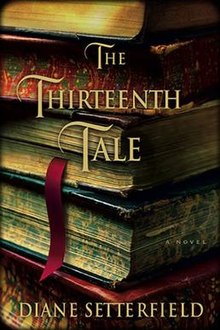When I ranked Muriel Spark’s novels recently, there were a couple I hadn’t yet read. A few people had good words to say about The Bachelor though nobody seemed very enthusiastic about Aiding and Abetting. But the latter filled one of my remaining slots on A Century of Books, so here we are with Muriel Spark’s penultimate novel(la), published in 2000.
Who put Muriel Spark would come up with this premise? The starting point perhaps isn’t that eccentric – what if Lord Lucan were still alive, and went to a psychiatrist? But where many novelists would reach the limit of their strangeness, Spark sees it as a place to jump off from. Here he is with that psychiatrist, Dr Hildegard Wolf (whose usual treatment style involves just speaking about herself for the first several sessions):
It was towards the end of that month that Hildegard asked him her first question.
“What can I do for you?” she said, as if he was positively intruding on her professional time.
He gave her an arrogant look, sweeping her face. “First,” he said, “I have to tell you that I’m wanted by the police on two counts: murder and attempted murder. I have been wanted for over twenty years. I am the missing Lord Lucan.”
Hildegard was almost jolted at this. She was currently treating another patient who claimed, convincingly, to be the long-missing lord. She suspected collusion.
But that’s not all. Hildegard Wolf, in turn, has changed her name as she used to be a fraudulent stigmatic (i.e. someone who regularly bled from the places Christ was wounded, and thus considered a miraculous being). As I say, who but Spark?
There are another couple of characters – related to someone who allegedly harbour Lord Lucan during his escape from justice – who are out to gather information and track him down. I found them less interesting, and that storyline less successful. And, frankly, even the two characters who might be Lucan were less interesting than Hildegard Wolf – she is without a doubt the star of this novel.
According to Louise Welsh’s introduction, Spark wrote in her notes for Aiding and Abetting that ‘the theme of novel is blood’. And that is the link. We hear about the menstrual blood that Wolf has used in her past to fake this miracle – though perhaps less information about this past life than you might expect. We hear about the blood from the nanny that Lord Lucan murdered, and the way it became uncontainable.
As Hildegard knew from her own experience as a stigmatic fraud, blood, once let loose, gets all over the place. It sticks, it flows, it garishly advertises itself or accumulates in dark thick puddles. Once it gets going, there is no stopping blood.
I didn’t know very much about the Lord Lucan case. I knew the vaguest outline of what he did – killing the nanny, having mistaken her for his wife, then fleeing – but it happened 11 years before I was born (to the day, in fact). As Spark alludes to with the title to her novel, he managed to escape because a group of titled people closed ranks and aided his escape. Many of the accepted events of the murder are referenced in Aiding and Abetting but I think the novel is probably more successful for people like me, largely unaware of the case, than they would be for those who were immersed in the details of it at the time.
As I started Aiding and Abetting, I couldn’t see why people weren’t rating the novel higher. It was so well done – typically Spark matter-of-fact-madness, with some beguiling and well-drawn characters. But as the book went on, I could see why it doesn’t rate among her finest. The confidence of the opening wanes rather, and it doesn’t really hold together as a whole. At her best, Spark has a tautness and completeness to her novels that somehow make them feel like a polished form, even when she plays with narrative time and nothing does what you expect. Aiding and Abetting, contrarily, felt rather formless and random, and not in a deliberate way. It was still good, because it’s Spark, and better than some of hers I’ve read – but I certainly wouldn’t suggest anybody start their Spark reading journey with this one.











